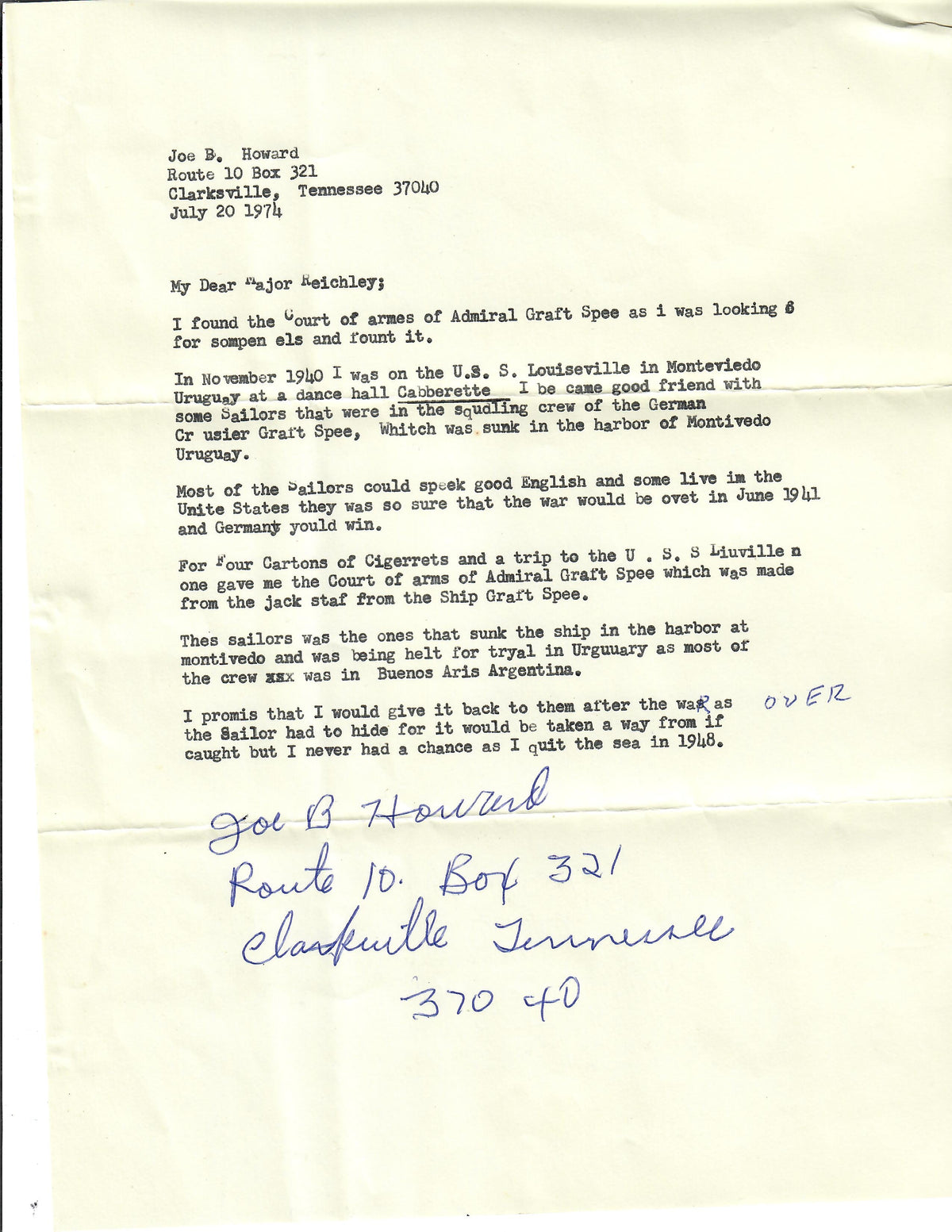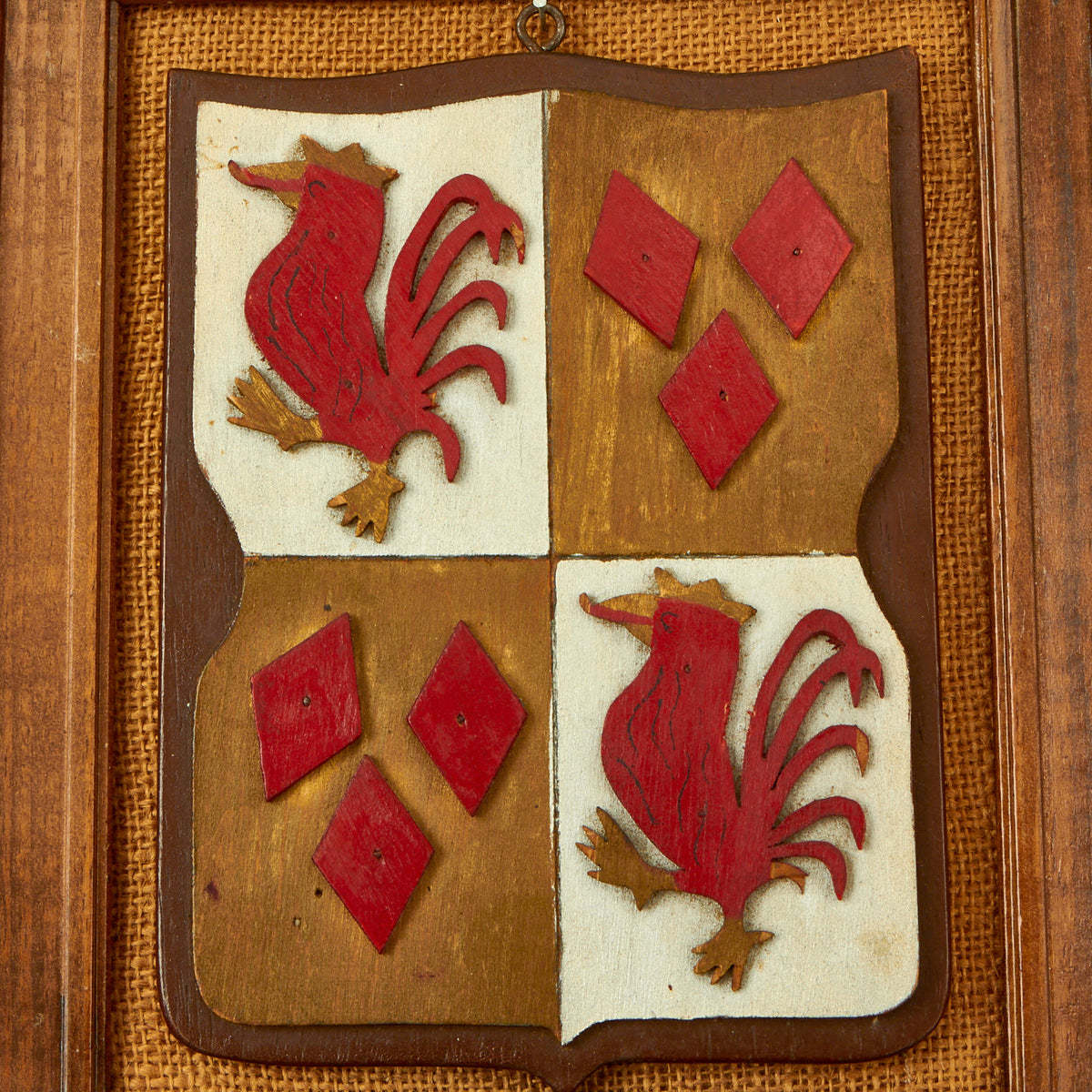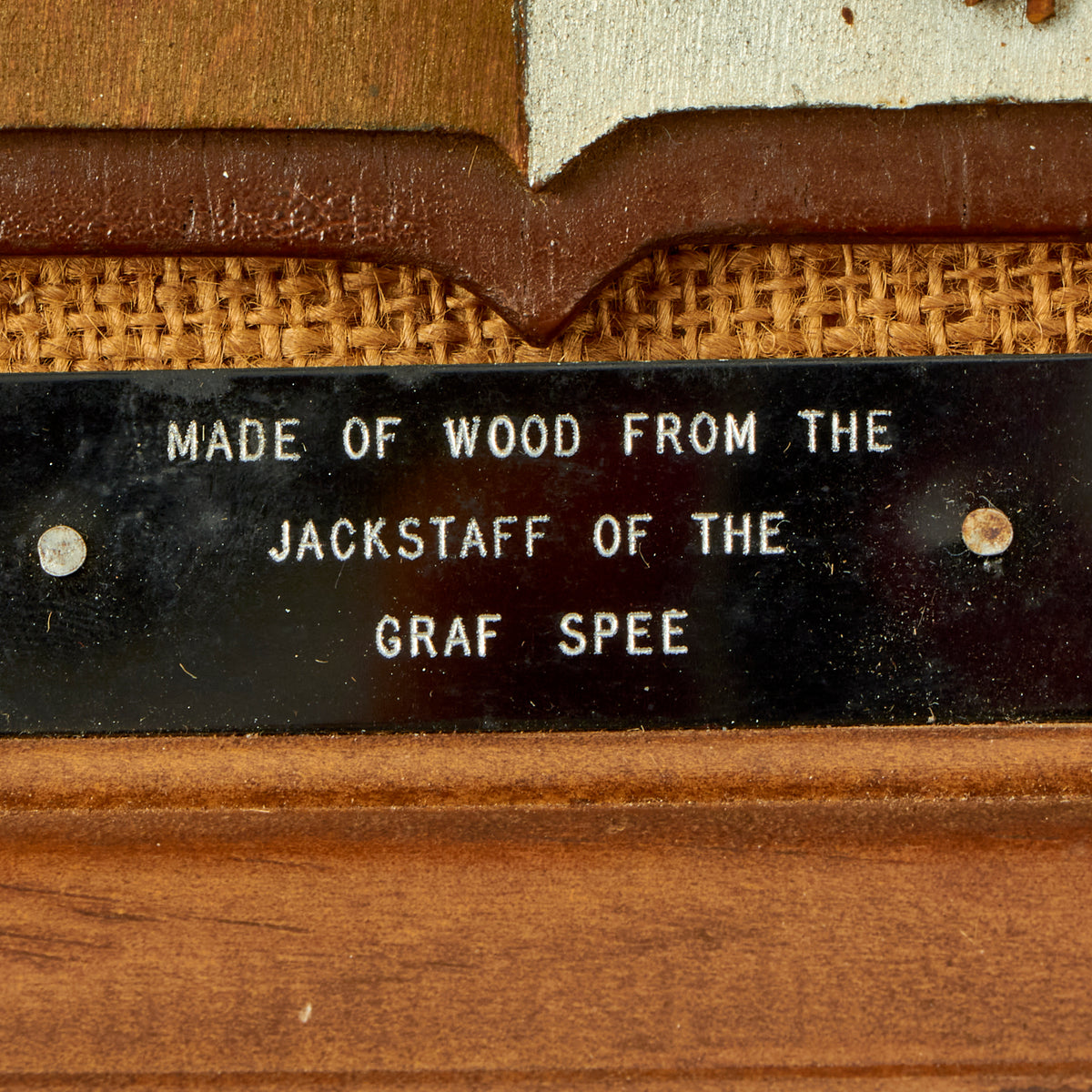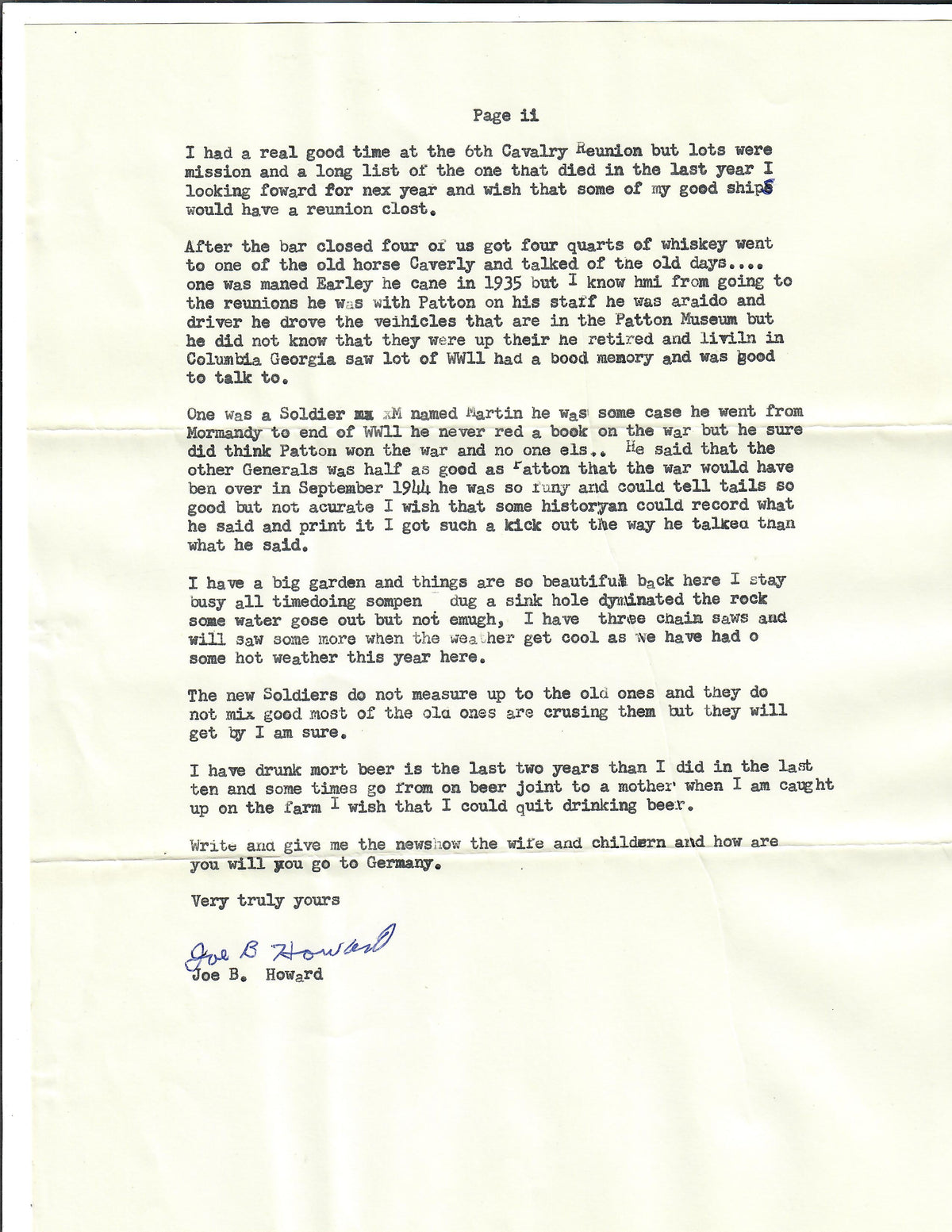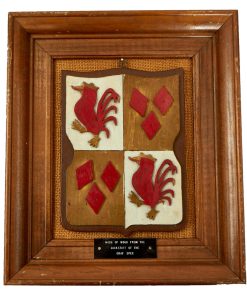Original German WWII Framed “von Spee” Family Coat of Arms made from Admiral Graf Spee Wood Pieces – USGI Bring Back Original Items
$ 795,00 $ 238,50
Original Item: One of a Kind. Now this is an incredible piece of history! The Battle of the River Plate on December 13th1939 was one of the first famous confrontations between the German Kriegsmarine and the British Royal Navy during WWII. This is a fantastic artifact attributed to the battle and related events, complete with some great provenance.
At the outset of the war, the Admiral Graf Spee and most of the Kriegsmarine began a campaign of commerce raiding against Allied merchant vessels. As A H was still trying to broker a treaty related to Poland with Britain, ships were only to be sunk if they were found to have contraband after inspection. After those efforts failed, permission was granted for sinking of Allied merchant vessels, and the Admiral Graf Spee began commerce raiding in earnest.
The British and French navies, now aware of a Commerce Raider off the South American Coast, formed 8 groups on October 5th 1939 to hunt down the Graf Spee in the Southern Atlantic. Her raiding continued until December 13th 1939, when she encountered British Ships off the coast of Uruguay, near the large River Plate estuary where the Capitals of both Uruguay (Montevideo) and Argentina (Buenos Aires) are located. The Graf Spee had lost her reconnaissance aircraft shortly before, and were unfortunately able to confirm the type and size of the ships. Kapitän zur See Hans Langsdorff, captain of the Admiral Graf Spee, assumed based on visuals that the vessels two destroyers.
Unfortunately, Langsdorff and his crew were incorrect, and they were up against three British cruisers, the heavy cruiser HMS Exeter and light cruisers HMS Ajax and HMS Achilles. Realizing his mistake, Langsdorff nonetheless ordered the crew to battle stations and to close at maximum speed. The ensuing battle resulted in Major Damage to HMS Exeter, as well as the other cruisers and the Graf Spee itself. All three ships survived, and the Graf Spee fled into Montevideo, Uraguay on the River Plate Estuary to effect repairs.
Unfortunately for Langsdorff, the oil purifier used to prepare fuel for the diesel engines was knocked out, which along with other damage meant that returning to a friendly harbor for repairs was impossible. To make matters worse, Uruguay, while neutral, was friendly to Great Britain, so if the ship was interned there, it would surely be investigated and military secrets compromised. It was considered that maybe the ship could break out of Montevideo to be interned at the German-friendly city of Buenos Aires in Argentina, but eventually Langsdorff chose to scuttle the ship.
On 18 December, the ship, with only Langsdorff and 40 other men aboard, moved into the outer roadstead to be scuttled. A crowd of 20,000 watched as the scuttling charges were set; the crew was taken off by an Argentine tug and the ship was scuttled at 20:55. The multiple explosions from the munitions sent jets of flame high into the air and created a large cloud of smoke that obscured the ship which burned in the shallow water for the next two days.
On 20 December, in his room in a Buenos Aires hotel, Langsdorff shot himself in full dress uniform while lying on the ship’s battle ensign. Then, in late January 1940, the neutral American cruiser USS Helena arrived in Montevideo and the crew was permitted to visit the wreck of Admiral Graf Spee. The Americans met the German crewmen, who were still in Montevideo. In the aftermath of the scuttling, the ship’s crew were taken to Argentina, where they were interned for the remainder of the war.
However, the Helena wasn’t the only ship to visit Montevideo before the U.S. entrance into WWII. The Northampton-class cruiser USS Lousville was also present in the Eastern South America area during 1940 after fleet problems in the Pacific. During this time, the ship put in at Montevideo in Uruguay, definitely a more friendly port-of-call than German-friendly Buenos Aires, even though the U.S. was neutral. It was at this time that Joe B. Howard of Clarksville TN went ashore, as described in a letter he sent to Major John A. Reichley at Fort Mead, MD in 1974. For clarity purposes we have corrected the numerous spelling mistakes in the original letter.
Joe. B. Howard
Route 10 Box 321
Clarksville, Tennessee 37040
July 20 1974
My Dear Major Reichley;
I found the Coat of Arms of Admiral Graf Spee as I was looking for something else and found it.
In November 1940 I was on the U.S.S. Louisville in Montevideo Uruguay at a Dance hall Cabaret. I became good friends with some sailors that were in the scuttling crew of the German Cruiser Graf Spee, which was sunk in the harbor of Montevideo, Uruguay.
Most of the sailors could speak good English and some live in the United States, as they were so sure that the war would be over in June 1941 and Germany would win.
For four cartons of Cigarettes and a trip to the U.S.S. Louisville one gave me the Coat of Arms of the Admiral Graf Spee, which was made from the jack staff from the Ship Graf Spee.
These sailors were the ones that sunk the ship in the harbor at Montevideo and was being held for trial in Uruguay as most of the crew was in Buenos Aires Argentina.
I promised that I would give it back to them after the war was over, as the [German] sailor would have to hide it for it would be taken away from [him] if caught, but I never had a chance as I quit the sea in 1948.
Joe. B. Howard
The coat of arms that Howard refers to is a small hardwood example measuring 6 1/4″W x 8 1/2″H, made from a dark hardwood. It displays the “von Spee” family coat of arms, with roosters in two quadrants, with three diamonds in the other. It is made from Several pieces of wood, with the backing, shield, and insignia all separate. The diamonds are held on by a single nail each, which is why they are rotated somewhat out of position.
This then hangs in a larger frame, measuring 13 5/8 x 11 1/2 x 1 3/4″. Attached to the back of the frame is the original envelope used to send the letter, post marked JUL 22 1974. Also in the envelope is what looks to be some personal correspondence, also from Joe B. Howard.
Now, we are assuming that at least some of the story behind the coat of arms was “lost in translation” when it was acquired, either due to a language barrier, or due to an alcohol-induced one. As best we can tell from period photographs, the “jack staffs” of German Capital ships during the WWII era were made from reinforced steel tubing, not wood, so it is unlikely that this coat of arms could be made from that part of the ship. We were unfortunately not able to confer with any experts on mid 20th Century Capital Ship construction.
There were however many other parts such as the deck and areas of the bridge that were made from wood. We assume that the coat of arms was made from decking or some other wooden material from the ship, possibly acquired after the sinking. It is well made, and definitely looks to be quite old, as does the frame.
A great piece of WWII memorabilia, and and even greater story to go with it!
Fast Shipping with Professional Packaging
Thanks to our longstanding association with UPS FedEx DHL, and other major international carriers, we are able to provide a range of shipping options. Our warehouse staff is expertly trained and will wrap your products according to our exact and precise specifications. Prior to shipping, your goods will be thoroughly examined and securely secured. We ship to thousands clients each day across multiple countries. This shows how we're dedicated to be the largest retailer on the internet. Warehouses and distribution centres can be located throughout Europe as well as the USA.
Note: Orders with more than one item will be assigned a processing date depending on the item.
Before shipping before shipping, we'll conduct a thorough inspection of the items you have ordered. Today, the majority of orders will be delivered within 48 hours. The delivery time will be between 3-7 days.
Returns
The stock is dynamic and we cannot completely manage it because multiple stakeholders are involved, including our factory and warehouse. So the actual stock may alter at any time. It's possible that you may not receive your order once the order has been made.
Our policy is valid for a period of 30 days. If you don't receive the product within 30 days, we are not able to issue a refund or an exchange.
You can only return an item if it is unused and in the same state as the day you received it. You must have the item in its original packaging.
Related products
Uncategorized
Uncategorized
Uncategorized
Uncategorized
Uncategorized
Uncategorized
Uncategorized
Uncategorized
Uncategorized
Angolan Rebel 1970s era 60mm Inert Display Mortar from Angolan Civil War Original Items
Uncategorized
Uncategorized
Uncategorized
Uncategorized
Uncategorized
Armored Burgonet Helmet & Polearm from Scottish Castle Leith Hall Circa 1700 Original Items
Uncategorized
Uncategorized
Uncategorized
Uncategorized
Armoured Fighting Vehicles of the World: AFVs of World War One (Hardcover Book) New Made Items


